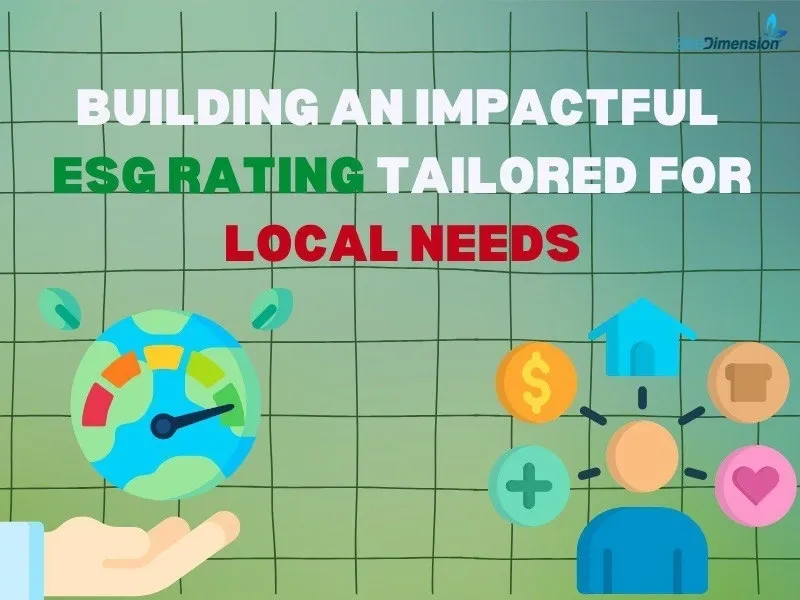
Developing an impactful ESG rating system tailored to local needs is crucial in today’s rapidly urbanizing world. Such a system enables cities and companies to measure and enhance sustainability performance, effectively aligning with regional priorities. This blog will outline 7 steps to develop a relevant, credible, and data-driven ESG rating system that aligns with regional priorities. Let’s explore how to achieve this!
Step 1: Understand Local and Regional Context
-
Example: In regions with water scarcity, focus on water usage as a critical metric.
-
A beverage company using 15 liters per liter of product, vs. an industry average of 10, would score lower on environmental metrics, highlighting a key area for improvement.
Step 2: Benchmark Against International Standards
-
Adapt global frameworks like GRI or SASB to reflect local priorities.
-
Example: In local governance scoring, adjust benchmarks to regional standards, so a score of 75 could be considered strong in the local context, whereas globally it might be average.
Step 3: Develop a Transparent, Tailored Methodology
To ensure accuracy in the manufacturing sector, ESG performance should be measured by weighting each pillar according to industry relevance: Environmental factors account for 50%, Social factors for 30%, and Governance factors for 20%. The final score is calculated based on these weighted metrics, providing an accurate and industry-specific ESG rating.
Step 4: Collect & Analyze Reliable Data
-
Gather data from public reports, company disclosures, and audits.
-
Example: If a company’s GHG emissions are 100,000 metric tons (vs. an 80,000 industry average), they receive a lower environmental score, prompting improvement in this area.
Step 5: Pilot and Refine the Methodology
Test your methods with local businesses and change based on their comments. For example, the initial findings could show Company A with an ESG score of 60, Company B with 63, and Company C with 67. Use this feedback to improve the technique, so that it better reflects local needs and appropriately rates ESG performance.
Step 6: Launch and Promote the ESG Rating System
Provide clear, weighted evaluations to help firms recognize their strengths and areas for improvement. For example, the final scores may be Company A with 62.5, Company B with 67, and Company C with 72. Company C, which has the best score, enjoys a major advantage in ESG-related investments.
Step 7: Continuous Improvement & Impact Measurement
-
Track progress over time to ensure lasting impact.
-
One year later, Company B reduced emissions and improved its environmental score from 40 to 60, achieving an overall ESG score of 72.
Summary: Driving Local Impact with ESG
This approach empowers companies to align with global standards while addressing local needs, creating a sustainable and competitive ESG advantage.







